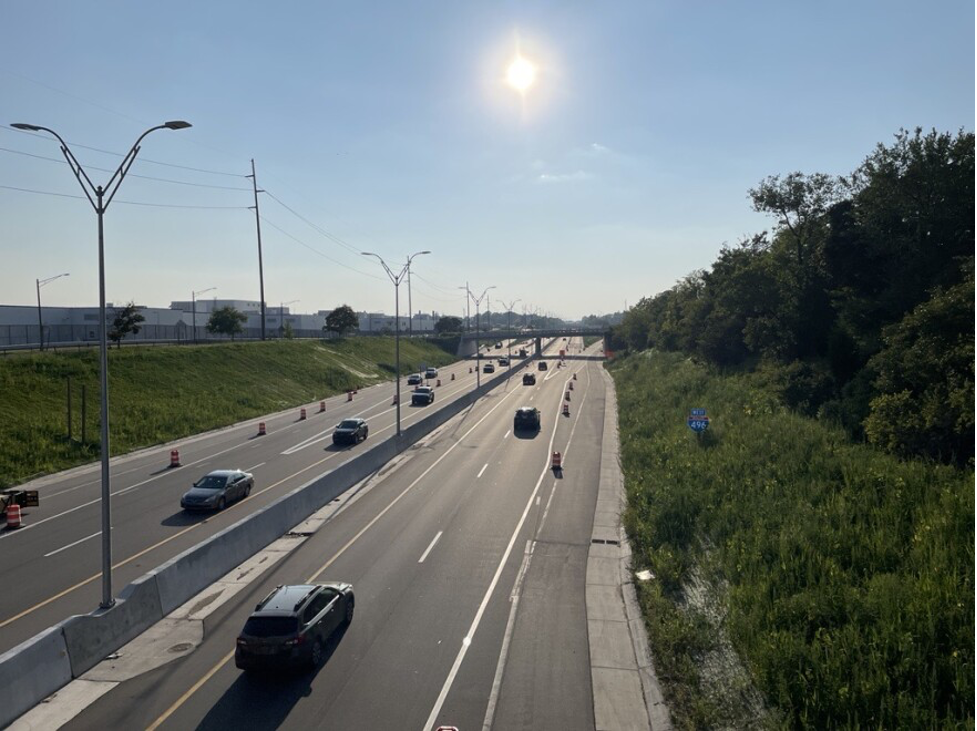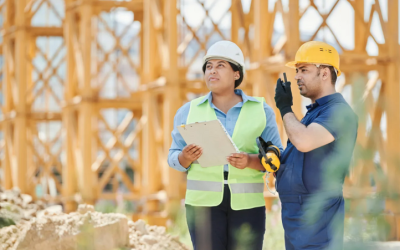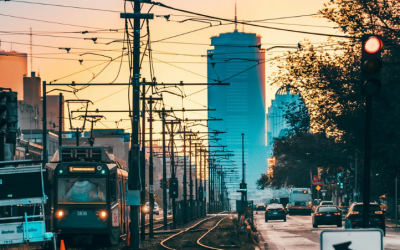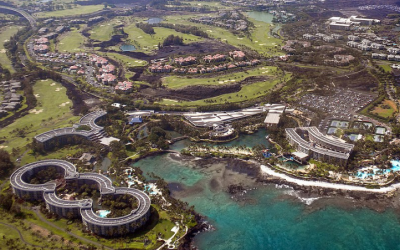While it only takes eight minutes to traverse the city of Lansing, Michigan, on I-496, the cross-town expressway, it has taken 50 years to begin addressing the isolation and injustice the highway’s construction precipitated when it sliced through a vibrant neighborhood and dislocated its predominantly Black residents.
The highway project demolished more than 840 houses and businesses from 1963 to 1970. More than 600 families had to relocate. Left behind were fewer than 70 acres cut off from the rest of the city, hemmed in by a GM plant, the Grand River, railroad tracks and the highway. It came to be called The Island Neighborhood.
Today, with assistance from the Local Infrastructure Hub, city leadership is seeking to reconnect the 400 households and businesses that remained with the rest of the Westside Neighborhood to which they belong. Considerations include pedestrian and bicycle bridges, improved public transit, greater green space and even air-quality buffers.
This is an all-too-common legacy of highway construction that occurred in the nation’s urban centers in the 1960s and 1970s. The Bipartisan Infrastructure Law contains a Reconnecting Communities and Neighborhoods Program that, as described by the U.S. Department of Transportation, “seeks to redress the legacy of harm caused by transportation infrastructure.”
Lansing failed to secure money from the federal program in its first attempt. City officials then turned to the Local Infrastructure Hub for help to correct what federal officials had described as weaknesses in the application.
“Our shortcoming the first time around was really around data,” says Sarah Spitzley, a strategy analyst in the office of Mayor Andy Schor. “We painted a really good story, but we didn’t have a ton of data to back it up.”
Spitzley enrolled in a Hub Bootcamp devoted to the neighborhood connection program. There, she says, presenters offered tools that allowed cities to dive deep into local statistics, trends and documentation. She says she now has “pages and pages of data” on topics from health risks in the neighborhood to transit availability.
“It has been, honestly, invaluable,” she says. Among the Bootcamp’s features are peer sessions, where officials from different cities share ideas.
“Hearing how somebody else would address the same problem you are having makes your wheels turn a little bit more,” Spitzley says.
The city is now considering applying for a $1.3 million grant for a two-year project. The first year would be devoted to engaging community members; the second year would involve retaining an engineering firm to study the most suitable corrective options.
“This is something the community wants, but what is the actual solution?” she says. “Is it a walk bridge instead of a car bridge? Is it a park in the neighborhood? Is it bike lanes and bike infrastructure, more bus stops?
“We don’t know that answer. So that’s what we want this planning grant for, to conduct the feasibility of whatever it is the community says that is how they want to be revitalized.”
The Local Infrastructure Hub is a national program created in 2022 to help small- and mid-sized cities develop competitive grant applications. It is led and funded by Bloomberg Philanthropies, the Ballmer Group, Emerson Collective, Ford Foundation and The Kresge Foundation. Partners include The U.S. Conference of Mayors and the National League of Cities.
So far, programming offered by the Hub has attracted more than 1,000 attendees nationwide. The Bootcamps have assisted cities, towns and villages on accessing funding available through the Bipartisan Infrastructure Law and the Inflation Reduction Act, from replacing crumbling infrastructure to increasing energy efficiency, to building stronger communities.
The city of Lansing has sought to embrace the memory of the pre-highway neighborhood. With the help of a National Park Service Grant, the Historical Society of Greater Lansing has collected oral histories from current and former residents and cataloged the redlining and racist covenants that kept many displaced residents from buying new homes in white neighborhoods.
“Life before 496, I’ll tell you, it was a Black Mayberry,” Adolph Burton, whose family was forced to move, says in a historical society video. “Black folks in that neighborhood, we had our own stores, we had our night clubs, barbershops. It was really, really nice.
“When 496 did come through, it really dispersed a lot of us.”






